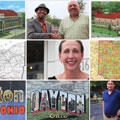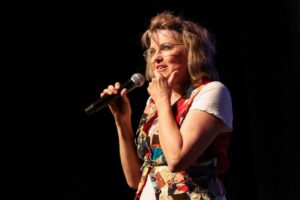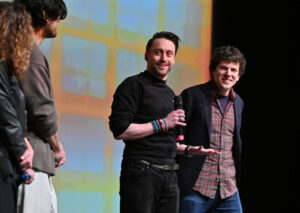Kamal Sinclair, Senior Manager, New Frontier
It is one thing to be a transmedia or interactive storyteller when you literally grew up on the Internet and are indigenous to creative coding, network logic and social media. But, it takes a different level of courage to use these new forms when you have a vetted filmmaking career that started well before Google, Facebook, Twitter, YouTube, Smart Phones, Kickstarter, or even email and the World Wide Web.
“The big gap in the field is helping traditional storytellers gain access to technology and raising their comfort level with it. For example, at hack-a-thons storytellers feel intimidated and forget they need to be comfortable with creative coders like they are with DPs.” -Sarah Wolozin, Director of the MIT OpenDocs Lab
During this great sea change in the forms and channels of storytelling, Sundance Institute’s New Frontier program is focused on supporting both the “Net-Native” generation of storytellers growing their practice, as well as traditional storytellers expanding their practice. We are deeply encouraged by New Frontier Story Lab alum Julia Reichert and Steve Bognar. This dynamic team, whose combined IMDb profiles go back to 1971, made the leap into interactive and transmedia documentary with the successful launch of Reinvention Stories.
The genesis of the project was a call out to public media stations and indie producers by AIR, whose Localore initiative was designed to foster innovation non-fiction storytelling in public media. Julie and Steve, along with their local radio station, WYSO 91.3 in Dayton, Ohio heeded the call and were selected by AIR to collaborate on the project.
Focused on the inspiring process of reinvention they observed in economically devastated areas of Dayton, they proposed to create a community project made by a community. The design allowed people to add their own stories, ask questions, and answer questions. Additionally, audiences could listen to these stories on the local public radio (WYSO) or visit the website and watch the resulting short film passively, according to the artists’ storyline; or actively, according to their own curiosity. Ultimately, the goal was to create a “living, breathing chronicle of one city’s struggle and resurgence.”
AIR selected Reinvention Stories as one of ten projects nationally and linked them with Zeega, a platform of interactive media that allows users to “make the web they want” by combining media from the cloud. Other collaborators joined the project, including Wright State University’s Motion Pictures program. Over the spring and summer of 2012, teams of collaborators walked the streets of Dayton collecting resonant stories of reinvention from the people of Dayton.
For example, they captured the story of Mitch, an average middle class person who ended up an alcoholic “street person” and reinvented himself into a working class person in a job that gave him a “sense of dignity.” Or Holly, a small business owner that had to close the doors of her store and reinvent herself as an employee, who states she has “no regrets” for having taken the chance at opportunity. Or Jeremy, who overcame the financial challenges of his small business, relocated to a new store and is now thriving.
By the October 2012 New Frontier Story Lab, the team had a rich collection of stories and a vision for an interactive and transmedia design; but Julia and Steve were “…grappling with the challenge of creating an interactive documentary.” They admitted that their “years of traditional documentary filmmaking were both helpful and a hindrance. When you’ve spent decades learning how to tell stories a certain way, it’s hard to start over.” However, the Story Lab’s Creative Advisors, including Kara Oehler (Co-Founder of Zeega), Noland Walker (AIR Executive Editor/Localore), Kirby Dick (The Invisible War) and Lance Weiler (Reboot Stories) helped them to overcome those obstacles and refine the design, based on learning from their own explorations in these forms.
“Its fruitful when you involve people from different backgrounds in a collaboration and give them equal weight, it forces real conversation…it forces them to find something new and interesting. The first step is, just to get different folks in the room.” -Aaron Koblin, Google Creative Lab
One of the lessons in innovation affirmed by this project was the importance of collaboration. From WYSO inviting Steve and Julia to collaborate, to the robust involvement of the community, to the cross-pollination of ideas at the Sundance Resort and their “post-production” retreat, collaboration permeated every aspect of Reinvention Stories’ development and brought it to life.
In the early part of 2013, Reinvention Stories was launched to great acclaim by the documentary and public media community. Sundance Institute celebrates Julia and Steve for experimenting in unknown territory, learning what works and what doesn’t work, creating language, and vetting models on behalf of the wider creative community.




